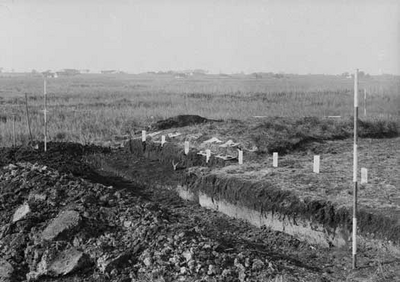How did the people live in the Maglemosian period?
Some of the Maglemosian hunter settlements are found in the bogs of western Zealand, for instance the Maglemose at Mullerup. This bog has given its name to the Maglemose Culture. Two settlements are known from here, which were excavated at the beginning of the 20th century. These were both small sites, apparently associated with a single family. The southern part of both settlements had lain under water during the winter months. This has meant that the bones from the site are very well preserved. Here the hunters’ rubbish dumps were found. Animal bones and other leftovers lay where they were discarded over 8500 years ago.
Human bones were also found scattered over some of the settlements, although complete burials are rare. All of the settlements are believed to have been the homes of single families or small groups during the summer period. The deposits of animal bones and other waste at the sites can be explained by the hunters returning to the site year after year. Perhaps during the winter months they moved out to the coast and hunted seals. We can imagine that groups of hunters met at the winter settlements and feasted. As a result of subsequent rises in sea level the coastal settlements are now submerged. Today they lie on the sea bed, and only underwater archaeological research can prize information from the sea about the winter settlements of the Maglemosian people.


